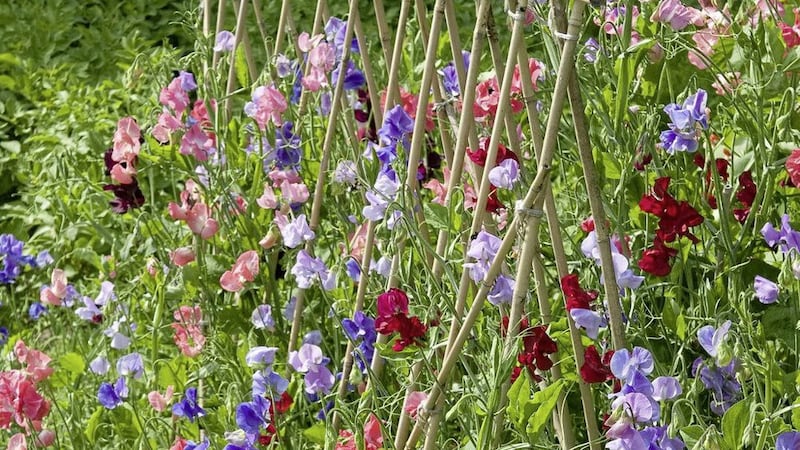IT'S some 17 days since the winter solstice, and in little over three weeks time we will celebrate St Brigid's Day.
With its origins in the Celtic festival of Imbolc, St Brigid's Day is traditionally a festival of fertility, and marks the beginning of spring. It is accompanied by a sense of rebirth and hope that the season ahead brings vigorous growth – something every gardener can relate to.
There's much debate over whether St Brigid's Day does indeed mark the beginning of spring, as there's still plenty of dark nights and wintry weather post-February 1, but at this time of year we tend to clutch to any sign that things are getting brighter and better.
Nevertheless, it won't be long now before we are cleaning recycled yoghurt pots and sieving seed compost in preparation for sowing this year's crops and ornamentals, but if you can't bear to wait any longer before kick-starting the growing season, then seek out a plant that benefits from a head start.
The sweet pea – Lathyrus odoratus – is a profusely-flowering, ornamental annual and perennial that looks at home in a variety of settings, and can even be utilised in the vegetable garden to trap nitrogen in the soil.
Sweet pea is a climber that grows vertically by sending out tendrils that twine themselves around the support, whether it's a metal arch, trellis or obelisk. It comes in a variety of colours, from vivid scarlet and inky purple to pastel orange and pearly white. The dainty blooms are often matched by a sweet perfume, which along with its abundance of flowers, makes legume an especially good cut flower.
Come June, you'll be able to pick up sweet pea – often sold together in trays of six – for less than a fiver in a garden centre, but by growing your own there's greater choice of variety and, hopefully, healthier plants. The secret to a successful sweet pea is early sowing, with either side of Christmas earmarked as the best time.
However, they have a reputation for poor germination when sown conventionally, so an extra bit of effort is often required at the outset. There are a number of methods that'll improve the chances for germination, all of which apply to common varieties and at any time during the indoor sowing season.
Removing a small part of the hard outer coat with a knife or filing it away in a method known as chipping helps immeasurably, as this enables moisture to get through to the kernel.
Soaking the pea-like seed in water overnight will also help, as does chitting – not chipping, as above – in the same manner you would with early seed potatoes. Chitting involves placing the seeds on a bed of moist paper kitchen towels and leaving them for a few days in a propagator or somewhere warm and dark, such as a hot press.
Once germination has taken place, it's time to get them into some growing medium.
It must be stressed that you don't want to be transplanting the young sweet pea again until they are being permanently homed outside in the garden, so ensure there's plenty of room in whatever container you decide to use. Once the seedlings appear, keep them cool to promote root rather than stem growth. If they get too leggy, pinch out the leader or growing tip to encourage side shoots and vigorous growth.









